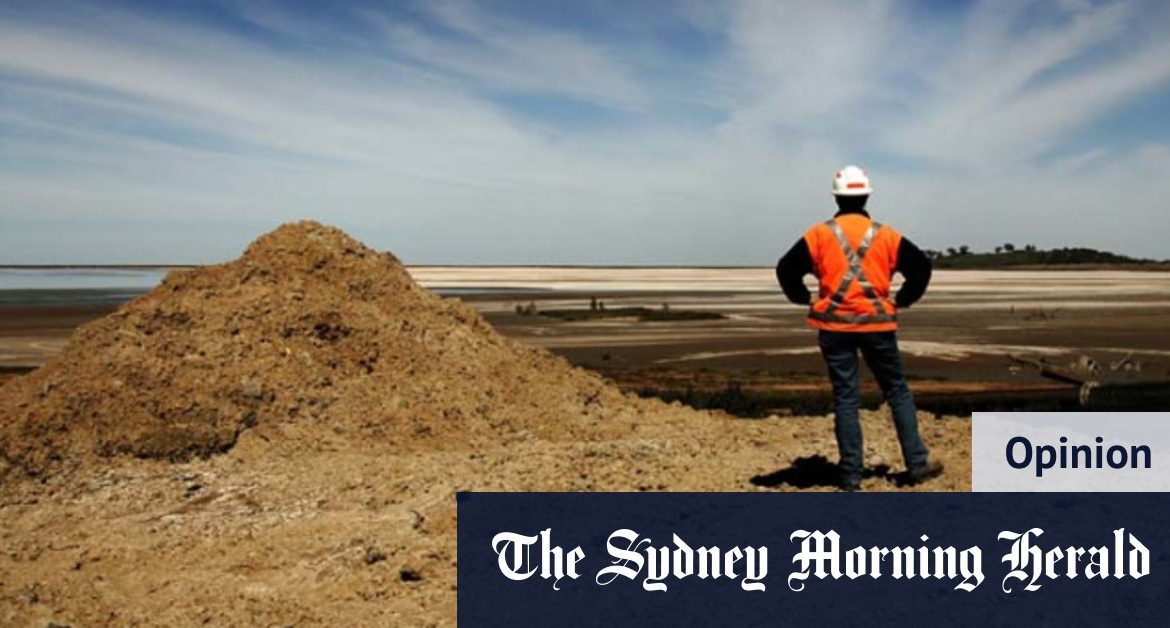The rebound in commodity prices augurs well for the outlook for the global economy, but it is its strength that is causing resource analysts to ask whether the world is entering a new “super cycle” in the demand for and pricing of commodities.
That is conceivable, although any economic forecast at present carries an asterisk related to the course of the pandemic and the effectiveness of efforts to contain it and, as the vaccines are distributed, eventually bring it under control.
The key ingredients for a new resources boom – a super-cycle – are present.
The thesis supporting the view that we are at the dawn of a new super cycle relies on the unusual confluence of conditions largely, but not entirely, created by the pandemic.
The last super cycle, which essentially ended when commodity prices crashed in 2014, was driven largely by China’s emergence as an economic power, aided by a burst of growth in other developing economies like Brazil, Russia and India.
So far the surge in prices is again being driven by China and its “V-shaped” and early recovery from the virus, fuelled by a smaller version of the infrastructure investment-led stimulus that powered its exit from the 2008 global financial crisis.
The breadth and extent of the rise in commodity prices implies that the economic rebound will continue, along with a more general recovery in the key developed economies of the US and Europe.
Turning on the tap
The macro settings are supportive. The central banks in the US, Europe and elsewhere are pursuing unprecedented monetary policies, setting their interest rates at zero or below and pumping credit and liquidity into their economies.
The US Federal Reserve’s balance sheet has expanded from less than $US4 trillion ($5.2 trillion) before the pandemic to more than $US7 trillion today – and is still growing at a rate of about $US120 billion a month as it hoovers up bonds and mortgages, injecting ultra-low-cost liquidity into the US financial system and economy.
Governments have responded to the pandemic with massive doses of fiscal stimulus, with more to come.
Global debt rose some $US17 trillion last year to about $US275 trillion, or 105 per cent of global GDP, according to the International Institute of Finance – and is still rising. Most of that increase – about $US10 trillion, according to Fitch Ratings – was in government debt.
Those fiscal spigots aren’t suddenly going to get turned off – the Fed and the European Central Bank have signalled their current settings will remain until there are signs of sustained inflation, which may be years away.
The savage impact of the virus in the US, where little has been done to contain it, US indebtedness and the prospect of multi-trillion dollar relief packages and infrastructure and social welfare spending now that the Democrats control Congress have depressed the US dollar.
The greenback has depreciated against the basket of its major trading partners’ currencies by about 12 per cent from its levels last March and is about 7 per cent lower than it was a year ago.
The US dollar and commodity prices – and the sharemarket – have inverse correlations. When the dollar is strong, commodities and sharemarkets tend to weaken while dollar weakness is generally accompanied by strong commodity prices and equity markets.
That’s logical. A weaker US dollar improves the competitiveness of American exports and, because commodities are priced and traded in US dollars, it makes them cheaper and increases demand in the commodity-intensive economies in Asia.
The Biden factor
The other, longer term, macro influence that supports the super cycle thesis is the acceleration of efforts to decarbonise the global economy.
US President-elect Joe Biden’s embrace of decarbonisation could further stimulate demand. Credit:AP
That push will gain momentum from the Democrats’ triumph in the recent US election and the unexpected control of the Senate they gained through the run-off elections in Georgia, and from Joe Biden’s support (unlike his predecessor’s scepticism) for global action to combat climate change.
Decarbonisation means a massive increase in demand for copper and other resource sector commodities to facilitate the increase in electric vehicles and solar and wind power generation.
When the last resources boom ended, the miners did what they have traditionally done and slashed their costs and investment. Once they weathered the post-boom storms, the big miners embraced quite stringent frameworks for capital allocation and succumbed to pressure from their investors to return surplus cash to shareholders.
That has meant a relative dearth of investment in developing new ore bodies, with the lead times to develop major new mines and continued discipline by the major miners, anxious not to make the same mistakes of over-investment that they were punished for when the last boom ended likely to be a constraint on new supply for some years to come.
Loading
The situation is particularly acute in copper, where the grades from the existing major deposits have been declining (and costs increasing) for years, and no new mines of significance have been developed.
Thus the key ingredients for a new resources boom – a super-cycle – are present.
A surge in demand appears likely in an environment where supply is expected to be constrained for at least some years.
The pandemic does, of course, provide the large black asterisk next to any economic projection.
Stephen is one of Australia’s most respected business journalists. He was most recently co-founder and associate editor of the Business Spectator website and an associate editor and senior columnist at The Australian.
Most Viewed in Business
Loading







